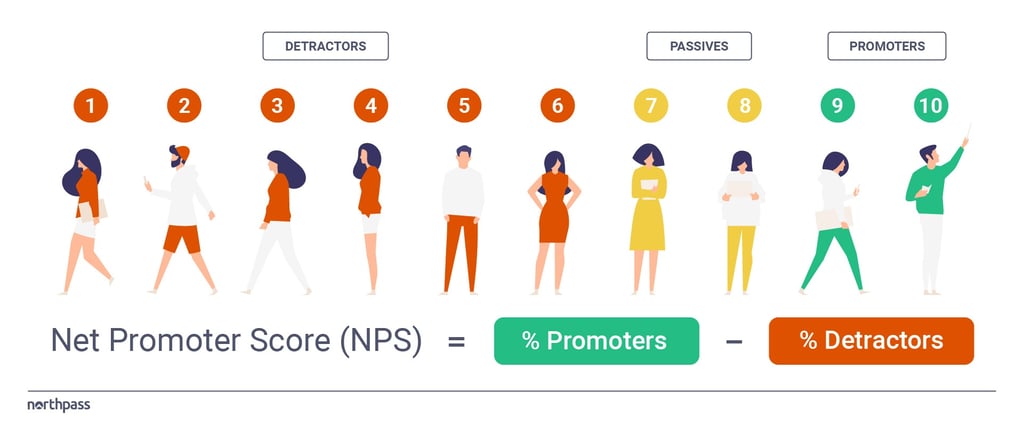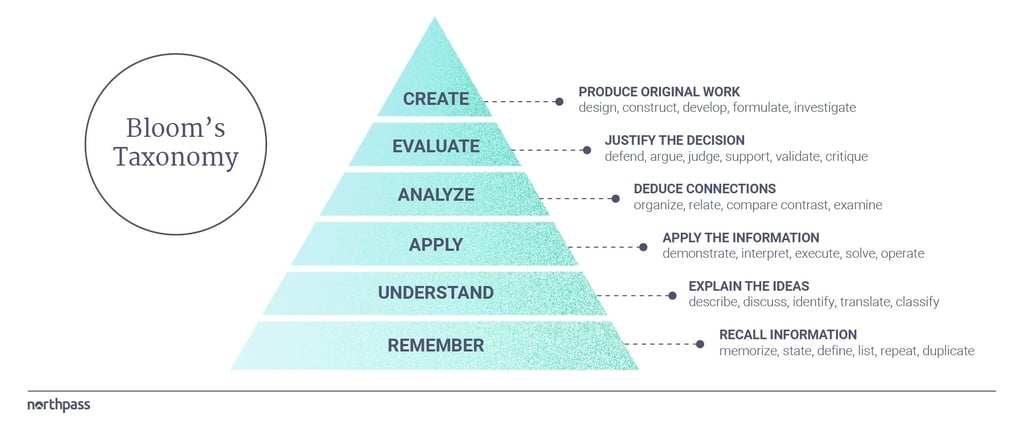How do I create online training courses?
This is a pressing question among learning teams looking to educate their customers, employees and channel partners on different topics related to their business.
Luckily, today’s learning tools (i.e., learning management systems) make creating these online courses much easier. All the same steps may be involved, including content production, project management and pilot testing, but new tools make them much less daunting to accomplish.Still, if you’re unsure about getting started with online course development, you might feel a little intimidated. Don’t despair. Typically, much of your time falls within the pre-planning stages — choosing the content, storyboarding, designing the look and feel of the instruction — as well as the actual production and programming of the courses. Handle those tasks properly and expeditiously and you’ll have a scalable online training program in place in no time.
Bonus Content 🚀
Customer Education RFP: Finding the Perfect LMS to Power Your Program
Keep Customers Happy in 2022 with Online Training
10 Ways to Improve Your Customer Education Strategy in 2022
How to Set Training Objectives for Customer Education
How to Create Online Training Courses in 5 Steps
Here are five incredibly easy-to-follow steps that you can follow to develop impactful online training courses for your learners. At Northpass, we call this the Beginner’s Guide to Creating an Online Training Program as it'll enable you to develop and launch online training courses when and where your learners need it.
It's an iterative process that recommends you start small (with one course), learn from the process and your learners’ engagement, and adjust and improve your program based on your target learners' feedback.
Step 1: Define Your Online Training Goals and Learner Persona
Embedded in this front-end planning is getting an in-depth understanding of your target audience (i.e., who you're developing the online training courses for).
- What are their demographics?
- What do they care about?
- What terminology or jargon would/wouldn’t they understand?
- How do they like to learn?
- What would they like to learn?
Next, determine the purpose of your first course.
- Is it to instruct learners on a specific tech program or skill?
- Is it to help them be better practitioners in their industry?
- Is the aim to create a short digital instructional course to promote your brand and services?
- Is the program a one-off course or a series of learning paths?
The purpose of your online course should also help you define the business metric you’d like to impact with your training. Traditionally, training managers, instructional designers, and L&D professionals aren’t accountable for business goals but rather simply developing and delivering content. However, there's no better way to show the value and ROI of a training program than to affect business outcomes.
To do that, you must start early by establishing the business metrics you want to impact at this stage. For example, a business metric that training can influence may be net promoter scores (NPS) which you can measure by creating forms that ask pointed questions, like "How likely are you to recommend us to a friend?"

Example of a Net Promoter Score
Now ask yourself how training will allow you to accomplish that business goal. Your answer to this question will be your training goal — the high-level reason for why you want your learners to complete the online course.
Using the example of improving NPS, your training goal may be to make your Customer Service (CS) team more knowledgeable in supporting your customers. After all, the more customers feel supported, the better their feedback will be on your company’s customer service.
Finally, you’ll need to determine the learning objectives for your first online course.
That is, upon successful completion of the course, what will people be able to do? Ideally, all learning objectives should be actionable, such as “Customer service reps will be able to successfully respond to the 20 most commonly asked questions by customers.”
Let’s recap on the three items you’ll need to define in this first step.
- Business goal (e.g., Improve net promoter scores by 10%)
- Training goal (e.g., Make customer service reps more knowledgeable about support)
- Learning objectives (e.g., Reps will be able to answer the 20 most asked customer questions)
Step 2: Create an Outline for Your Online Training
You now know why you’re creating the online training program, how it'll impact the business and the objectives of your first online course. In step 2, you'll use the learning objectives to create an outline for your first course. This can be something as simple as a bulleted topical outline or as detailed as a storyboard (or both).
Example of a Topical Outline
|
Topical outline template |
Topical outline example |
|
|
In this example, the main topics serve as folders, while the subtopics will be the line items that you’ll turn into learning activities and content. As you create this outline, be sure the content ties back to the learning objectives you established in step 1.
For some, the topical outline may be sufficient in documenting and communicating the course curriculum to the team before diving into actually developing the training (step 3).
Others may find additional value from creating a detailed storyboard. For example, if you’re working with a team of other designers or programmers who need a blueprint for your online course creation process.
A storyboard is an overview of every element in your online course, from start to finish. This can include text, audio, slide presentations, the lessons as they appear on the learners’ screens and videos. Storyboards can be as complex or as simple as you need them to be. You can create a simple outline with pencil and paper or you can create complex PowerPoint slides. Your content authoring tool may also have storyboarding capabilities built-in.
There are many ways to storyboard to aid in online training creation, but here is a basic guide:
This step was explained previously. If you’ve already created the topical outline, you're ahead of the game in creating your storyboard. The only thing you’ll need to add to the outline are numbers for each subtopic, which will help you easily map the storyboard screens to the topical outline. Let’s use the outline example from above:
Example of a Storyboard Outline
- Getting to Know Our Customers
- [1.1]
- [1.2]
- [1.3]
- Answering Product Questions
- [2.1]
- [2.2]
- [2.3]
- Offering Best Practices
- [3.1]
- [3.2]
- [3.3]
If you have a clear picture of the media types and assets you’ll use to develop your training, you’ll be ready to create your storyboard screens using the steps outlined below. However, if you’re unsure or still deciding, skip to step 3 to get a better idea of the content and activity types you may want to include before moving forward with creating a storyboard.
In any case, you can always update your storyboard along the way – just be sure your team is aligned on all of the changes before you do.
To create a storyboard, use your outline to draw or sketch the outline of every screen in your online course. Try to visualize where the text, images, video, etc. will be on the screen.
Describe what will be in the visual areas in words, sketch it, or include the file name you'll be using. If you have a section of the screen designated for interactions, describe the interactions that'll occur there.
At this point in the process, project management comes into play. Establish a tentative timeline for when specific tasks will be completed. Although milestones inevitably get delayed for numerous reasons, a schedule keeps the team focused on what they need to do.
Step 3: Build the Content for the Online Training Courses
The bulk of the work will occur in this step, wherein you’ll develop the course content. Even so, this process need not be time-consuming.
Start by thinking about what content you already have — whether those are PowerPoint presentations, hard-copy or digital training manuals, videos (pre-recorded webinars or product demos) or support articles. Organize those pieces in a cohesive manner. So you’re not overwhelmed by an overabundance of files that can lead to distraction, select only those materials that have a direct correlation to your learning objectives.
Now that you know what pre-existing content you have, you can determine what content you’ll need to update, adapt or develop from scratch.
Here are some tips for developing effective and engaging online training content.
If you’re new to online course creation, consider Bloom’s Taxonomy as an approach to balancing your course activities while also engaging a diverse group of learning styles with one, all-inclusive curriculum.

In the taxonomy, learners start at the base layer, or the “Remember” step, and work their way up as they master the content in the increasingly complex layers. While the base layer is considered the lowest level of learning, no other learning can take place until a student has the prerequisite knowledge acquired there.
The graphic already includes a few suggested activities that apply to the experience of learning online, but there are many more applicable activities out there. You’ll likely discover several of them through individual research, through learner suggestions or even accidentally.
If you’re using Bloom’s Taxonomy as a framework for online course creation, it’s worth noting that everything in the learning experience column is active instead of passive.
Learners must DO something to learn.
It's not enough to just record dozens of videos of yourself speaking into the camera unless you’re giving learners opportunities to apply the content they’re learning about, which should align well with the actionable learning objectives you laid out in step 1.
Fostering Engagement With Online Training
Interactive elements are a great way to turn passive learners into active learners. Elements such as simulations, games, discussion boards, surveys or quizzes help keep learners engaged. Let’s take a deeper dive into some content strategies that drive engagement.
Games
Games are a great way to engage learners. This method is often referred to as gamification. Depending on your subject matter and the demographic of your learners, you can decide where you go to create online games.
Simulations can also be a form of gaming. You can present learners with a scenario and provide several possible response options. Have them discuss the situation in a forum, then vote on the response they most supported. In the following week, create a situation that builds on the decision made the previous week.
Stories
Stories have become increasingly important as people innovate at alarming rates. Our personal stories are what differentiate us from others and make our novel. Communicating these interesting and unique stories is memorable and learning experiences need to be memorable.
Incorporating stories into your content delivery can increase engagement. It can be equally meaningful to require learners to share stories that relate to learned concepts. Assigning reflections, asking learners to blog, or posing forum prompts that allow focused sharing of personal stories can allow learners to make meaning through their own stories and reading colleagues’ stories.
Design
Creating a user-friendly online environment can help learners access information in a way that makes it more consumable. The curriculum design of the online course should flow from one topic to the next in a way that makes sense and builds on learned ideas.
In addition, the course's visual design will be more inviting if it not only looks appealing but also functions well. Twenty-first-century learners are more impacted by design as creativity becomes more important in differentiating ourselves and individuality becomes more valued socially.
Assemble all the components of the online course and create the first draft. Since mobile devices have become ubiquitous, view the courses on a tablet screen to ensure the learner has the same experience he or she would have on a desktop. This is the point in the cycle when the subject matter experts (SMEs) and instructional designers review the content to flag any mistakes or omissions to ensure a consistent flow to the instruction.
Step 4: Engage Your Learners
You're now more than halfway through the online training creation process and have your first course built.
Now, how do you plan on delivering it to your learners?
Believe it or not, the accessibility of your course is just as, if not more important than the content itself. Why? Because if learners can’t access your course, they won’t ever see the course content, to begin with.
Let’s talk about what we mean when we say “accessibility.” We’re referring to the learner flow that begins when someone first encounters the course (it may be course a link, landing page, etc.) to the point when they enter the learning experience and see the course content. Depending on how you structure this process, it can be as seamless as one click from end-to-end, to as friction-filled as multiple clicks on interfaces that are difficult to navigate.
There are a number of ways you can simplify online course access for your learners:
- Email the course access link
- Embed the link on your website
- Include the link in products used by your learners
- Send the course access link in a text message
- Ensure course delivery
- Provide the link in a chat channel (e.g., Slack, Intercom or HipChat)
- Enable single sign-on (SSO)
Your LMS should enable you to provide access to your learners in any of the methods listed above.
Once you’ve determined your access flow, pilot your courses with a select group of your target learners. Beyond just giving them access, remember to set up nudges to remind them to access the course, engage with the content and complete the training. Interact with them in the course forums and offer your support within the course and via email. When it comes to learner engagement, you will get out of it what you put in.
Step 5: Measure Meaningful Engagement Metrics
As learners access the online course, track their progress and engagement in the course in the analytics dashboard of your LMS. After they've maneuvered through the course, request feedback on where the course needs improvement. Perhaps they require more training on a particular topic you may have overlooked or where you gave minimal instruction.
These sample learners will provide input regarding the flow of the program.
Did the training progress logically or did learners stumble at certain points in the program?
Obtaining this candid feedback enables you to perfect the program before its official launch.
If any technical glitches pop up during this stage, notify the technology team members to rectify those.
Pay attention as well to the overall design of the program. Are you using white-label software and incorporating your company’s branding and design? Are you doing everything in your power to create a seamless experience? Now's the time to check and ensure your online course presents a professional image and is easy to read and navigate.
Final Thoughts: Creating Online Training Courses
After your first run through the five steps outlined in this post for creating online training, it'll become increasingly easier to build future courses. You'll gain tremendous insight into your target learners, what’s important to them and how to best keep them engaged. As a result of helping learners reach their training goals, you too can achieve your business goals.
If you're looking for LMS, look no further than Northpass. Book a demo today and see how Northpass can help you!
Originally published Jul 25, 2017. Updated Oct 1, 2021.

.png?width=3251&height=1107&name=NP_ByGS_ColorLogo%20(1).png)


